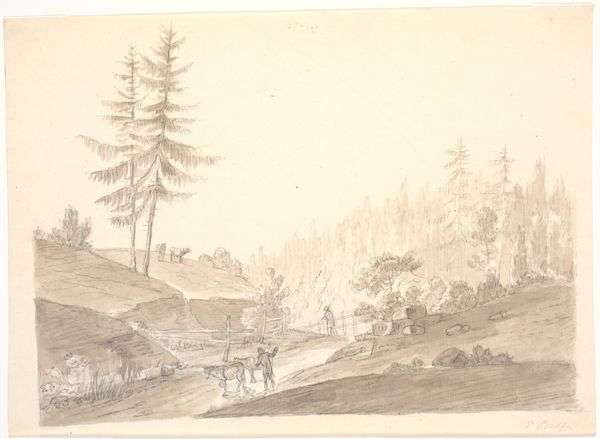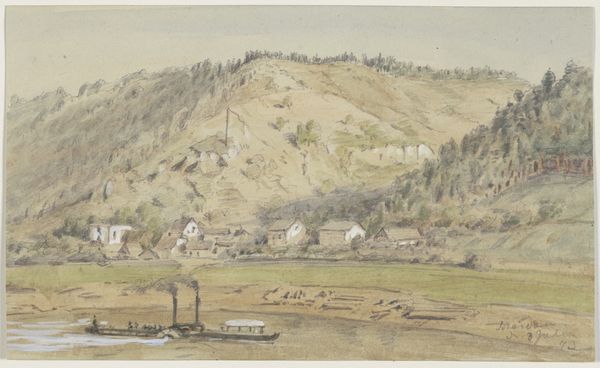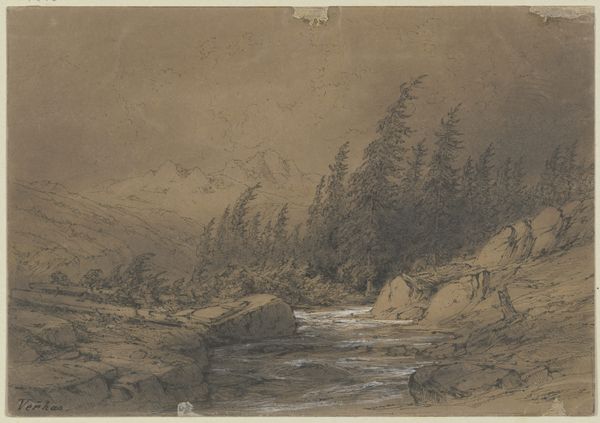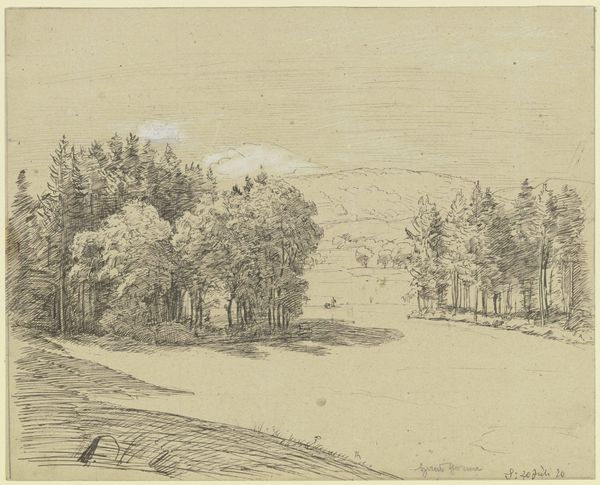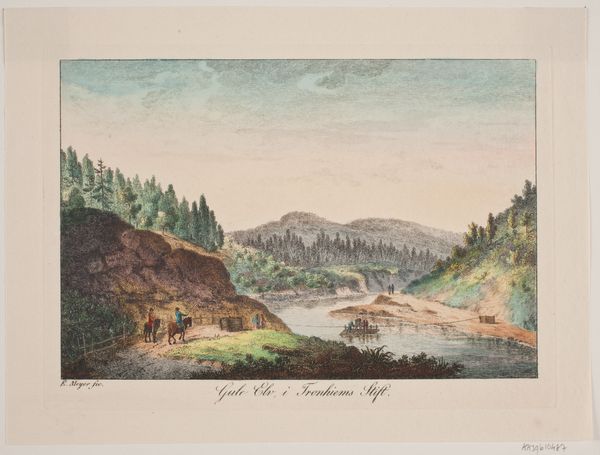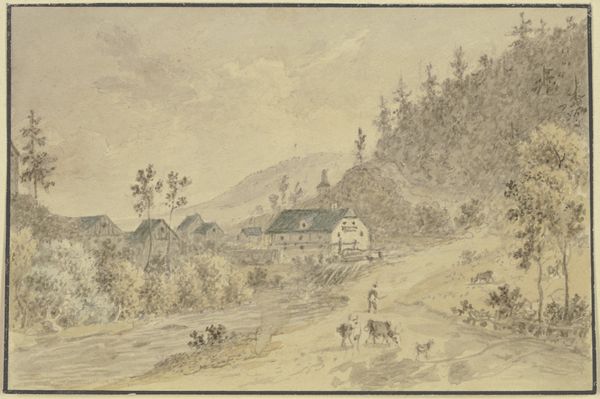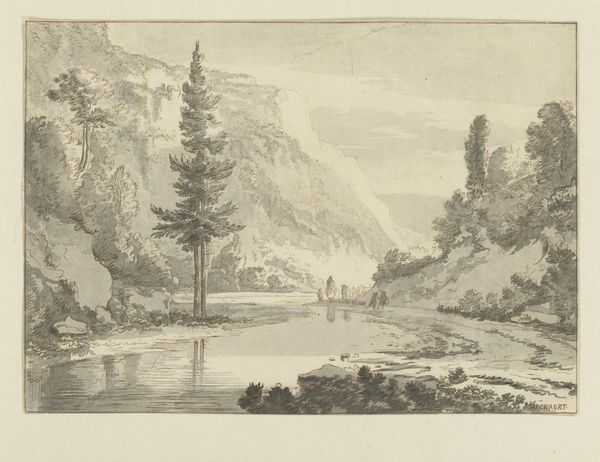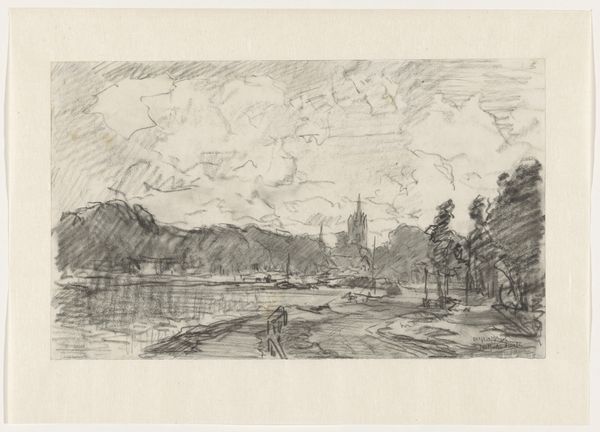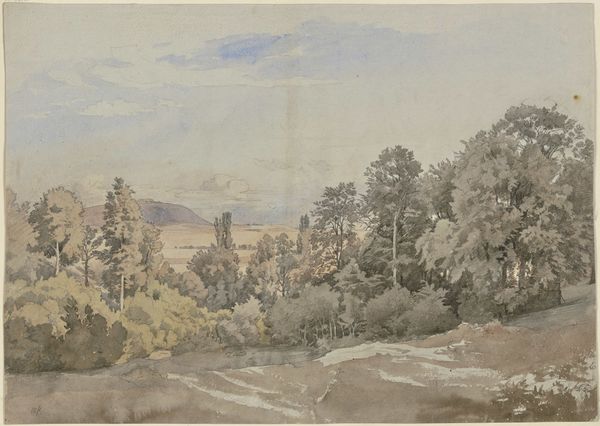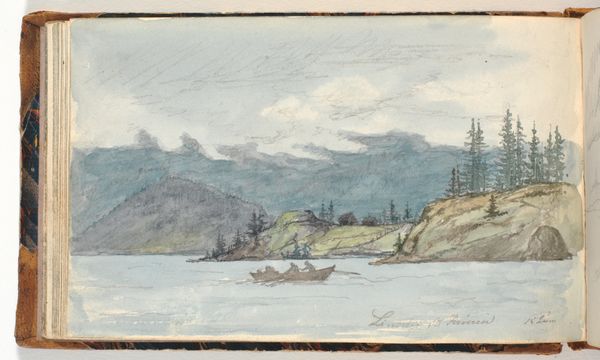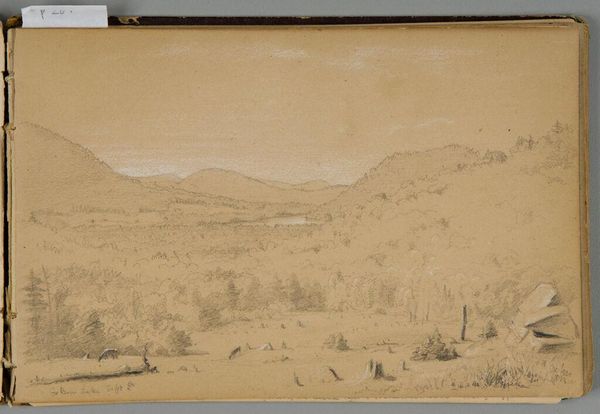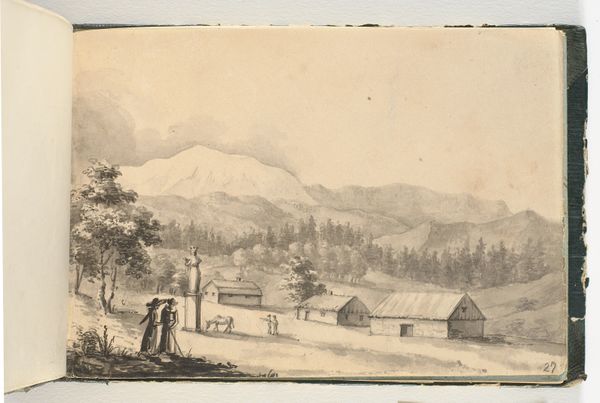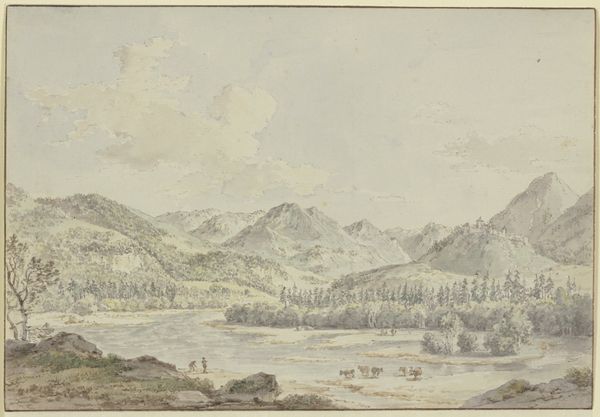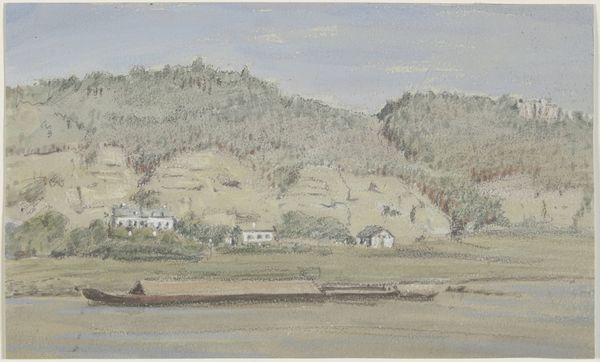
Copyright: Public Domain
Friedrich Eugen Peipers created "Das Kirnitzschtal bei Schandau", a drawing which now resides in the Städel Museum. This landscape offers a window into the Romantic era's fascination with nature, but also hints at the complex relationship between identity and place. During this time, artists and writers turned to the natural world as a source of spiritual and emotional solace, often in response to the societal changes brought about by industrialization and urbanization. Peipers' drawing invites us to consider how notions of German identity were being constructed through idealized representations of the landscape. Who had access to these landscapes, and whose stories were being told – or left out – in these depictions? The muted tones and delicate lines evoke a sense of tranquility and nostalgia. What does it mean to look at a landscape through the lens of longing, and how does that shape our understanding of both the environment and ourselves? This artwork prompts us to reflect on the stories we tell about the land and the ways in which those stories shape our sense of belonging and identity.
Comments
No comments
Be the first to comment and join the conversation on the ultimate creative platform.
